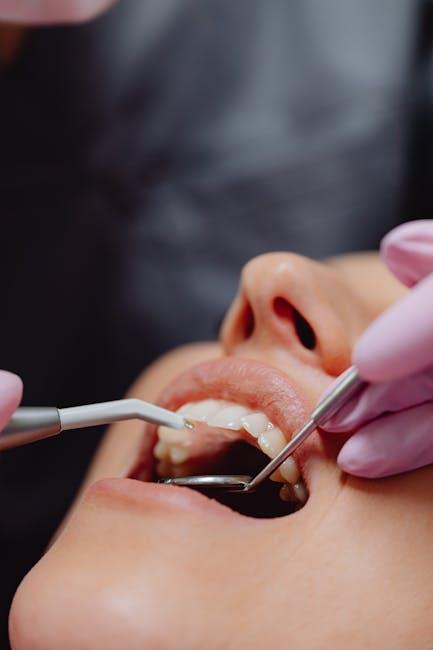
My View: Public Health Dentistry: Benefits and Limitations – American Dental Association
Oral health is an essential component of overall well-being, yet millions face barriers to accessing quality dental care. Public health dentistry plays a critical role in addressing these challenges on a community and population level. In this article, I share a comprehensive view of the benefits and limitations of public health dentistry, drawing on insights from the American Dental Association (ADA) and current research. Whether you are a dental professional, policymaker, or health-conscious individual, understanding this dynamic field can help empower better oral health outcomes and practices.
What Is Public Health Dentistry?
Public health dentistry focuses on preventing and controlling dental diseases and promoting oral health across communities rather than individual patients alone. It encompasses community water fluoridation programs, school-based dental sealant initiatives, oral health education, and policy advocacy aimed at reducing disparities in dental care access.
According to the American Dental Association, public health dentists work at the intersection of clinical care, research, education, and health policy to improve the oral health of entire populations.
Benefits of Public Health Dentistry
Public health dentistry offers numerous advantages that contribute to improving community oral health. Below are some key benefits:
1. Improved Access to Care
Public health programs target underserved populations by providing affordable or free dental care, especially in rural areas, low-income neighborhoods, and schools.
2. Prevention-Oriented Approach
Preventive measures such as dental sealants, fluoride varnishes, and oral health education reduce the prevalence of cavities and gum diseases.
3. Community-Wide Impact
Interventions like water fluoridation benefit entire communities by lowering the incidence of dental caries across age groups.
4. Cost Savings
By focusing on prevention and early treatment, public health dentistry reduces the need for costly restorative procedures and emergency visits.
5. Data-Driven Policy Making
Public health dentists collect data to shape effective dental health policies and programs that address real community needs.
Limitations of Public Health Dentistry
Despite its many merits, public health dentistry also faces significant challenges and limitations, including:
1. Funding Constraints
Many public oral health initiatives depend on limited government and nonprofit funding, restricting program reach and sustainability.
2. Workforce Shortages
Lack of adequately trained public health dentists and support staff hampers effective program implementation in some areas.
3. Geographic Barriers
Remote and rural populations may remain hard to reach despite outreach efforts, complicating equitable service delivery.
4. Behavioral and Cultural Challenges
Changing community health behaviors and overcoming cultural mistrust require significant time and effort.
5. Limited Scope of Services
Public health dentistry often focuses on preventive care and may not address complex restorative or specialty dental needs comprehensively.
Table: Public Health Dentistry – Benefits vs. Limitations
| Benefits | Limitations |
|---|---|
| Improves access to underserved communities | Dependent on inconsistent funding sources |
| Emphasizes prevention and education | Workforce shortages impede service delivery |
| Provides community-wide health improvements | Geographical and socio-cultural barriers remain |
| Reduces long-term healthcare costs | Limited in addressing complex dental treatments |
| Supports data-driven health policies | Behaviour modification requires sustained effort |
Case Study: The Impact of School-Based Dental Sealant Programs
One of the most effective public health dentistry initiatives, supported by ADA guidelines, is school-based dental sealant programs. These programs apply protective coatings to children’s molars, preventing cavities before they start.
Studies show that children receiving sealants through public health programs have substantially lower rates of tooth decay. Moreover, these programs are cost-effective, reach children who might not visit a dentist regularly, and foster lifelong positive oral health habits.
Practical Tips for Supporting Public Health Dentistry
Whether you are a dental professional or community member, here’s how you can contribute to the success of public health dental initiatives:
- Advocate: Support policies and funding for community oral health programs through local and national platforms.
- Educate: Share oral hygiene best practices and promote preventive care in schools and community centers.
- Volunteer: Participate in free dental screenings, sealant clinics, or oral health workshops.
- Collaborate: Dental professionals should engage with public health agencies to bridge care gaps effectively.
- Stay Informed: Keep up with ADA research and guidelines on public health dentistry trends and innovations.
My First-Hand Experience with Public Health Dentistry
Working as a community dentist in underserved neighborhoods has shown me the transformative power of public health dentistry. Beyond treating cavities and gum disease, it’s the oral education and preventive care that empower patients. Families appreciate the accessible, culturally sensitive services that address their unique circumstances. However, I’ve also witnessed firsthand the frustration caused by limited resources and workforce gaps, underscoring the need for increased support and innovation in this vital field.
Conclusion
Public health dentistry, as championed by the American Dental Association, remains a cornerstone in advancing equitable oral health care. Its benefits—improving access, emphasizing prevention, and shaping policy—are vital to reducing oral health disparities nationwide. Yet, limitations such as funding shortages and workforce challenges cannot be overlooked. By understanding both sides, stakeholders can better advocate for comprehensive, sustainable public dental health programs that ultimately improve lives.
In embracing a collaborative approach between dental professionals, policymakers, and communities, we can harness the full potential of public health dentistry to ensure healthier smiles for all.


